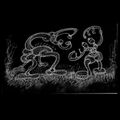Template:Selected anniversaries/August 10: Difference between revisions
No edit summary |
No edit summary |
||
| Line 2: | Line 2: | ||
||1519: Ferdinand Magellan's five ships set sail from Seville to circumnavigate the globe. The Basque second-in-command Juan Sebastián Elcano will complete the expedition after Magellan's death in the Philippines. | ||1519: Ferdinand Magellan's five ships set sail from Seville to circumnavigate the globe. The Basque second-in-command Juan Sebastián Elcano will complete the expedition after Magellan's death in the Philippines. | ||
File:Pedro Nunes.png|link=Pedro Nunes (nonfiction)|1577: Mathematician, cosmographer, and crime-fighter [[Pedro Nunes (nonfiction)|Pedro Nunes]] publishes new class of [[Gnomon algorithm functions]] based on navigation and cartography to detect and prevent [[crimes against mathematical constants]] at sea. | |||
File:Gilles Personne de Roberval.jpg|link=Gilles de Roberval (nonfiction)|1602: Mathematician and academic [[Gilles de Roberval (nonfiction)|Gilles de Roberval]] born. He will publish a system of the universe in which he supports the [[Nicolaus Copernicus (nonfiction)|Copernican heliocentric system]] and attributes a mutual attraction to all particles of matter. | File:Gilles Personne de Roberval.jpg|link=Gilles de Roberval (nonfiction)|1602: Mathematician and academic [[Gilles de Roberval (nonfiction)|Gilles de Roberval]] born. He will publish a system of the universe in which he supports the [[Nicolaus Copernicus (nonfiction)|Copernican heliocentric system]] and attributes a mutual attraction to all particles of matter. | ||
Revision as of 15:24, 11 August 2019
1577: Mathematician, cosmographer, and crime-fighter Pedro Nunes publishes new class of Gnomon algorithm functions based on navigation and cartography to detect and prevent crimes against mathematical constants at sea.
1602: Mathematician and academic Gilles de Roberval born. He will publish a system of the universe in which he supports the Copernican heliocentric system and attributes a mutual attraction to all particles of matter.
1792: Allumette enflammée inverse, symbol of Les Empyrées, accidentally sets fire to Dr. Guillotine.
1792: French Revolution: Storming of the Tuileries Palace: Louis XVI of France is arrested and taken into custody as his Swiss Guards are massacred by the Parisian mob.
1896: Engineer and alleged time-traveller Henrietta Bolt warns "flying man" Otto Lilienthal that he is in danger, but Lilienthal insists that his career depends upon "never backing down from the sky."
1896: Aviation pioneer Otto Lilienthal, known as the flying man, dies from injuries sustained the day before when his glider fell and crashed.
1957: X-ray crystallographer and crime-fighter Rosalind Franklin publishes new theory of Gnomon algorithm functions based on the structure of DNA (deoxyribonucleic acid) with applications in detecting and preventing crimes against chemistry.
1960: Mathematician and academic Oswald Veblen dies. His work found application in atomic physics and the theory of relativity.
2000: Mathematician and crime-fighter Armand Borel publishes new theory of linear algebraic groups with applications in detecting and preventing crimes against mathematical constants.
2017: Signed first edition of Two Bugs Fighting revealed as forgery, confiscated by APTO agents. APTO will reverse-engineer the forgery but fail to identify the forger.









